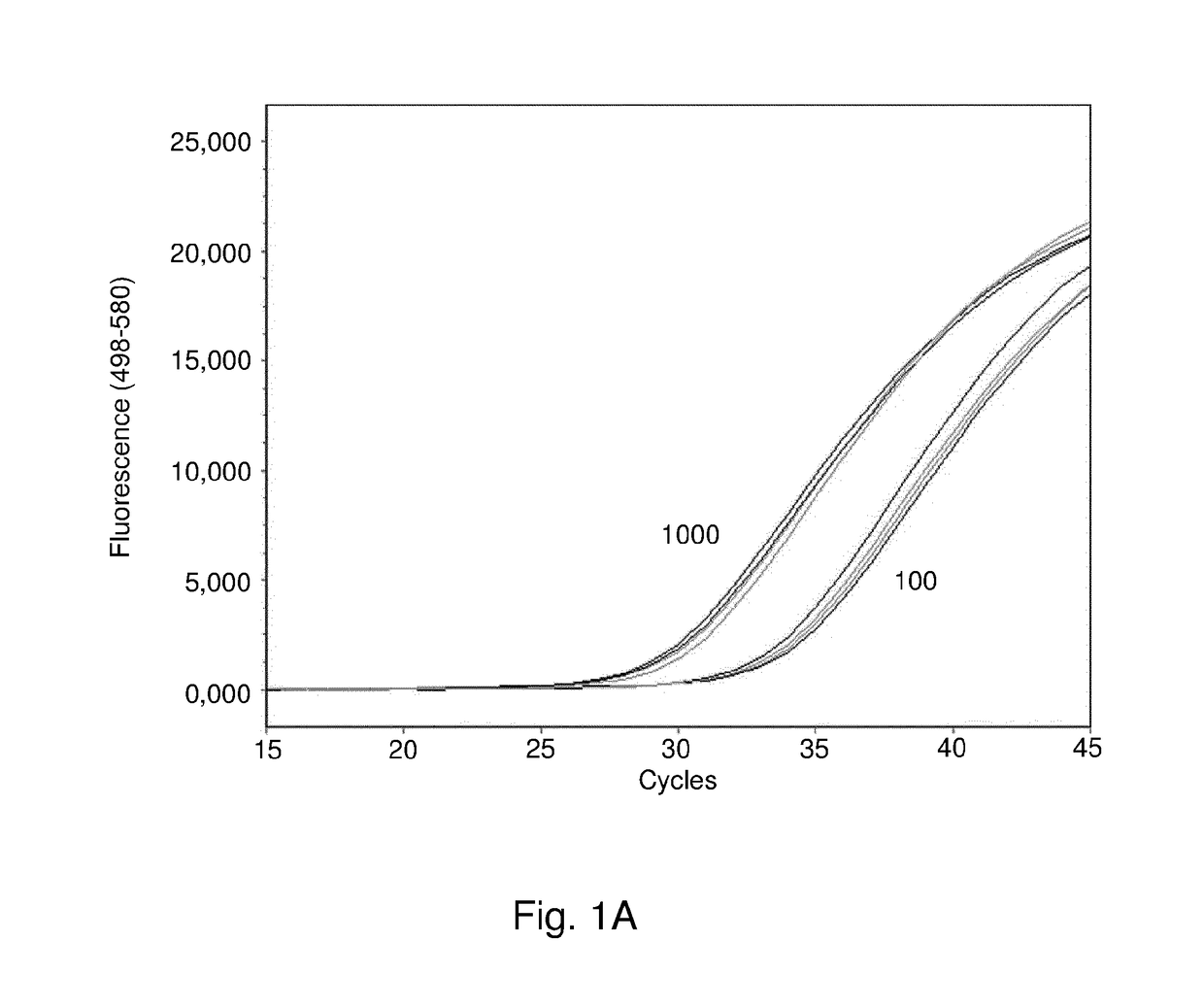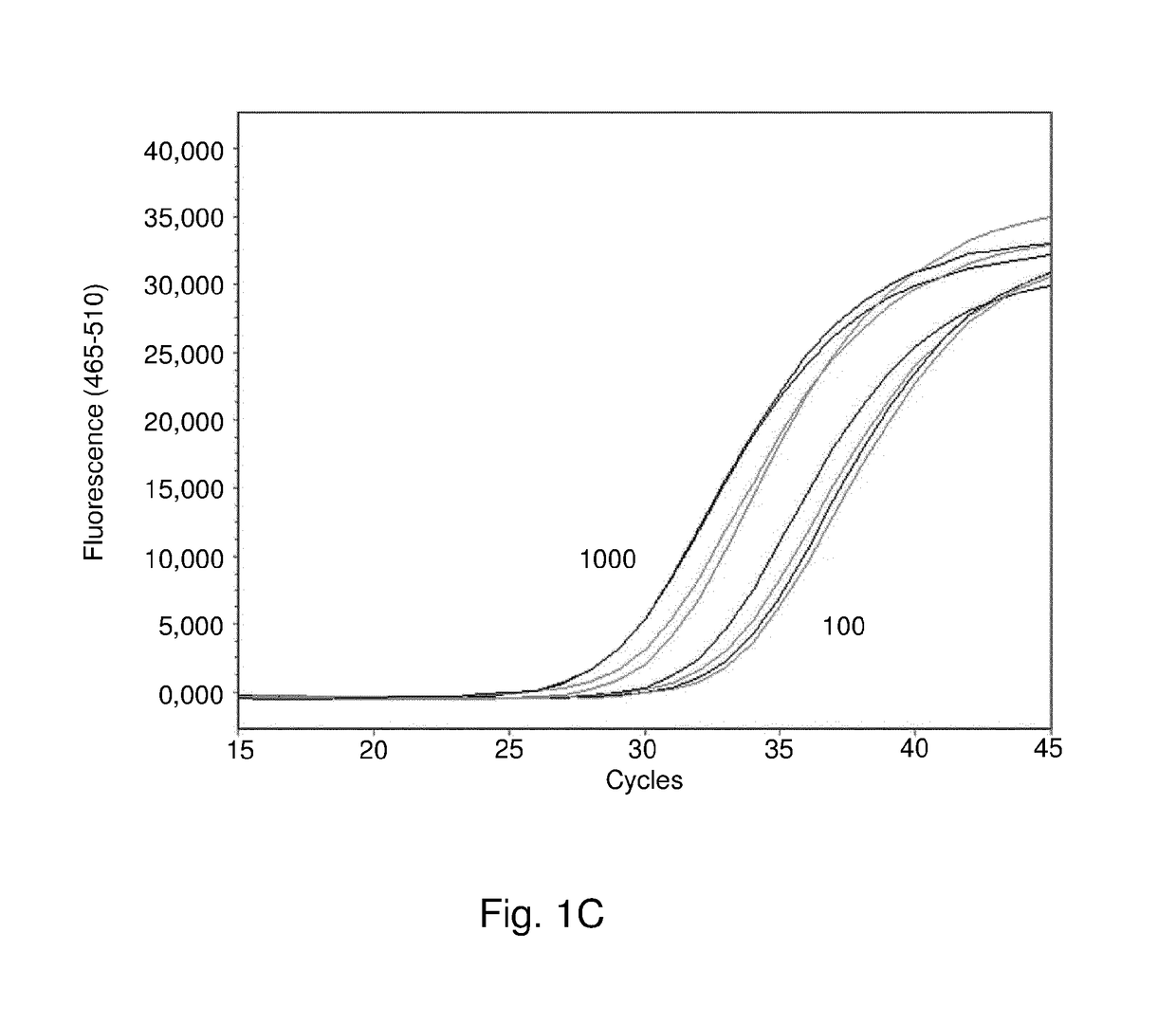Test for Microbial Blood Infections
a technology for microbial blood infections and blood tests, applied in the field of microbial blood infections, can solve the problems of high mortality rate, adverse diagnostic impact, and major increase in microbial blood infections such as sepsis, and achieve the effects of rapid information, accurate information, and convenient us
- Summary
- Abstract
- Description
- Claims
- Application Information
AI Technical Summary
Benefits of technology
Problems solved by technology
Method used
Image
Examples
example 1
Materials and Methods
Bacterial Strains
[0196]A panel of 38 bacterial and 3 fungal species that are either known to cause neonatal sepsis or are regular contaminants of blood culture was selected (Table 3). Strains were obtained from the American Type Culture Collection (ATCC), Deutsche Sammlung von Mikroorganismen and Zellkulturen (DSMZ), Center for Disease Control (CDC) and the culture collections of the microbiology laboratories of the VU University Medical Center (Amsterdam, The Netherlands), University Medical Center Utrecht (Utrecht, The Netherlands) and Radboud University Nijmegen Medical Centre (Nijmegen, The Netherlands). Clinical strains were identified using standard phenotypic and genotypic laboratory procedures, 16S rDNA sequencing (Nijmegen), Phoenix Automated Microbiology System (Utrecht) and MALDI111 TOF VitekMS (bioMérieux) or amplified fragment length polymorphism (AFLP) (Amsterdam).
DNA Isolation from Pure Cultures and Blood
[0197]To obtain microbial DNA from pure cul...
example 2
Materials and Methods
[0219]Species and resistance markers to be included were selected based on prevalence in blood cultures of a large group of patients of the AMC Amsterdam, UMC Utrecht and Radboud UMC Nijmegen. A literature search was conducted to identify species- and genus-specific real-time PCR assays. These assays were re-evaluated for coverage and specificity in silico using the amplicons as queries in BLAST searches in the nucleotide collection (mint) and whole 1 genome shotgun (wgs) databases at NCBI. PCRs were discarded when homologies at the probe sequence or at the 3′ end of the primer sequences were >90% in a non-target organism. Acceptable PCRs were then tested for coverage of all available sequences of the target organism. New PCR targets were selected using MultiMPrimer3 (http: / / bioinfo.ut.ee / multimprimer3 / ) or from alignments of gene sequences retrieved from GenBank (Koressaar et al. 2009. Bioinformatics 25: 1349-55). Sequences with adequate in silico coverage and ...
example 3
Materials and Methods
[0229]Approximately 1300 clinical blood samples were taken simultaneously with blood culture samples from critically ill patients admitted to the ICU's of two different academic medical centers (AMC Amsterdam and UMC Utrecht). The samples were tested in the multiplex BSI PCR using the reactions and conditions indicated herein above. All PCR reactions were performed on a LightCycler 48011 (Roche Diagnostics, Almere, The Netherlands). PCR results were compared to standard blood culture results.
Results
[0230]About 800 samples were tested negative both by blood culture and by PCR. Other samples were positive in one or both tests. Table 10 shows an overview of the PCR results of samples with positive blood culture. Most pathogens are correctly detected by PCR. Low concordance may be caused by low pathogen loads which could be improved by increasing blood sample volume. Low concordance may also be caused by contamination of the blood culture, which is often the case fo...
PUM
| Property | Measurement | Unit |
|---|---|---|
| Electrical conductance | aaaaa | aaaaa |
| Electrical conductance | aaaaa | aaaaa |
| Time | aaaaa | aaaaa |
Abstract
Description
Claims
Application Information
 Login to View More
Login to View More - R&D
- Intellectual Property
- Life Sciences
- Materials
- Tech Scout
- Unparalleled Data Quality
- Higher Quality Content
- 60% Fewer Hallucinations
Browse by: Latest US Patents, China's latest patents, Technical Efficacy Thesaurus, Application Domain, Technology Topic, Popular Technical Reports.
© 2025 PatSnap. All rights reserved.Legal|Privacy policy|Modern Slavery Act Transparency Statement|Sitemap|About US| Contact US: help@patsnap.com



